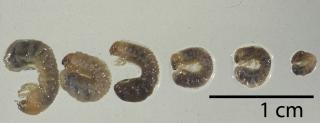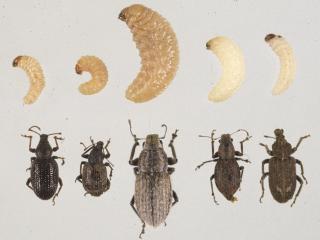How to distinguish between the beetle species
Species described
These insects are often found in the same situations and their feeding activity or damage may be confused with each other.
The beetles described include:
- African black beetle
- bronzed field beetle
- pasture beetle (Aphodius)
- vegetable beetle.
And beetles that are in the weevil group because they have a 'snout' include:
- apple weevil (curculio beetle)
- Fuller's rose weevil
- garden weevil
- sitona weevil
- small lucerne weevil
- spotted vegetable (desiantha) weevil
- subterranean clover (sub-clover) weevil
- vegetable weevil
- whitefringed weevil.
Differences in morphology of adults and larvae
Adult beetles
Adults of these beetles differ markedly. While adult weevils have a very hard outer shell, are usually flightless and have a prominent snout on the head, the beetles are also 'hard shelled', are more active fliers and do not possess a snout. Further descriptions for each adult species can be seen below.
Beetle larvae
African black beetle and pasture beetle are typically known as 'cockchafers' with larvae having:
- three pairs of legs on the thorax
- a prominent brown head with black jaws
- the body forming a C-shape with the end of the abdomen slightly enlarged.
Larvae of vegetable beetle and bronzed field beetle have the common name 'false wireworm' with larvae having:
- three pairs of legs on the thorax
- are not C-shaped
- vegetable beetle larvae have a worm like shape with shiny hard skin
- the larval stage of the bronzed field beetle are dark brown with upturned spines on the end of the body.
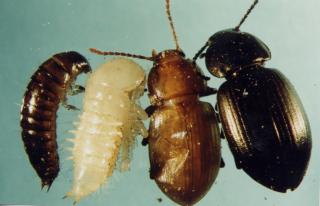
Weevil larvae
Weevil larvae are legless, the abdomen is not enlarged and have either:
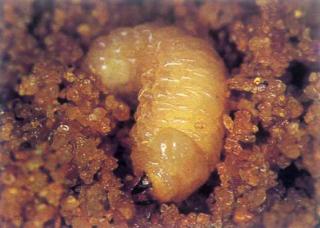
- a white head, which makes the two black jaws very obvious - includes whitefringed weevil, small lucerne weevil and Fuller's rose weevil
or:
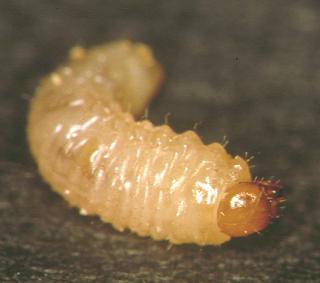
- a brown head - garden weevil, apple weevil, spotted vegetable weevil, vegetable weevil, sub-clover weevil and sitona weevil.

